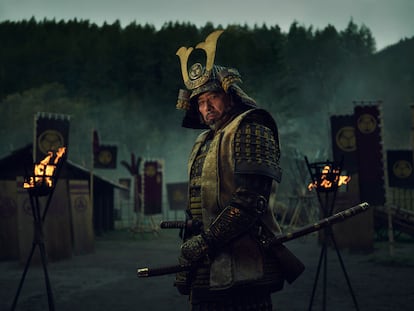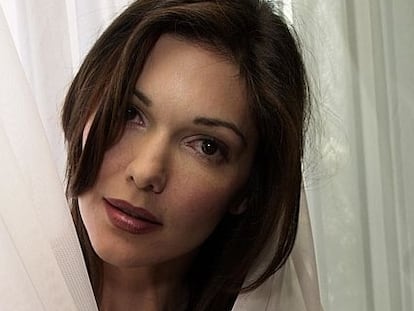Richard Chamberlain, the king of television who lived in hiding: ‘I would have been happier out of the closet, being free’
The actor, famous for series such as ‘The Thorn Birds’ and ‘Shōgun’ is about to turn 90. For the last two decades, the television legend has lived secret-free
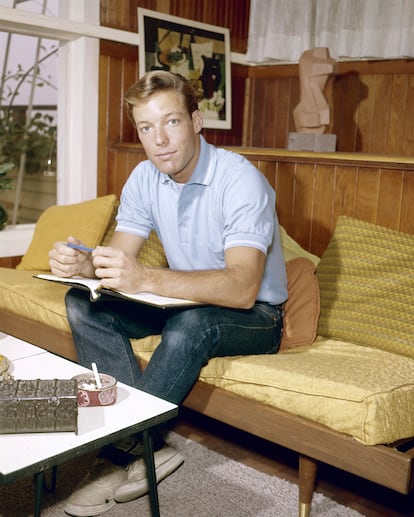
In the mid-1980s, it was impossible to find even a moderately attractive priest among Spanish parishes who hadn’t been nicknamed “El pájaro espino” (in English, ‘the thorn bird’). The influence of the TV series of the same name, which starred Richard Chamberlain, was enormous, and not only in Spain. Stateside, it reeled in more than 110 million viewers. But its priest character trapped between his faith, ambition, and love of a woman was not the only role that ensured Chamberlain’s place amid the pantheon of great TV stars. By the time he worked on the show, he was already known as “the king of miniseries,” thanks to his roles in Dr. Kildare, Shōgun, and The Count of Monte Cristo.
For two decades, he competed for the title of TV’s top heartthrob with studs like Kabir Bedi of Sandokan; David Soul of Starsky & Hutch and Robin Ellis of Poldark. Chamberlain dazzled with his particular brand of beauty, more European than Californian, closer to Helmut Berger than Burt Reynolds. He also stood out thanks to his talent, and the combination of the two opened doors to work in TV, and also in film and on Broadway. But none of his roles was more difficult than that of straight leading man. He played the heterosexual dreamboat up until 2003, when at the age of 69, considering he had nothing to lose, he came out of the closet in his autobiography Shattered Love. “I thought there was something very, very deeply wrong with me,” he told CNN at the time. “And I wanted to cover it up. I wanted — I didn’t want anybody to know ever. I remember making a pact with myself that I would never, ever reveal this secret, ever.”
His publisher knew Chamberlain liked to write, and asked him to send through some work. The actor began developing a kind of philosophical treatise until his inner voice, he would later tell FOX News, sent him a message: “Richard, you’ve been barking up the wrong tree here. There is nothing, absolutely nothing, wrong with you and your life and being gay. It’s totally irrelevant to your worth as a human being. Give up all this fear, give up all this hiding. Just give it up.’”
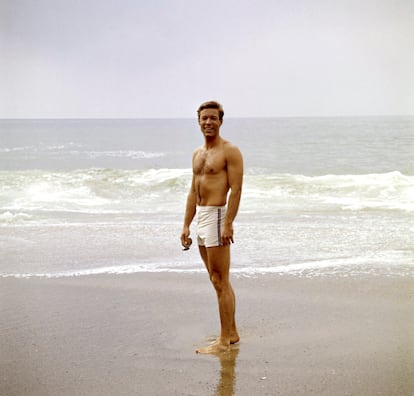
He suspected that the confession would overshadow the rest of the book’s content, and he was right. No one cared about the abuse he suffered at the hands of his alcoholic father, much less the intricacies of his successful career: people just wanted to know more about his sexual orientation, and for his part, he was ready to live out in the open. For too long, he had harbored the fear of going public with something that was already an open secret in show business. “Magazines did lots and lots of interviews, and they sort of suspected,” he said. “They would ask me questions like, ‘When are you going to get married and have children?’” In 1989, a French magazine exposed the real truth, but Chamberlain’s publicist denied the report. Fifteen years after that moment, which could have destroyed his career, the actor sat down with Larry King and spoke calmly about how he discovered his homosexuality when he was 10 years old, and that his first relationship with a man took place before he turned 23.
Chamberlain was not bitter. He had accepted the rules of the game and was able to find refuge in Europe, where things were more relaxed than in the puritanical United States. But his true place was in Hollywood. “I got used to being careful and circumspect,” he said. “I would have been a happier person being out of the closet and being free. But I had other motives that made me happy. I was a working actor and for me, that was most important.”
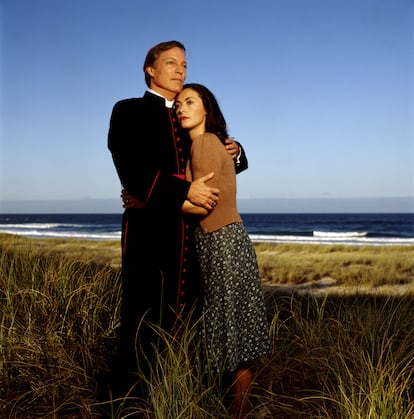
The king of TV
Chamberlain was born and raised in Beverly Hills. After graduating high school, he fought in the Korean War (where he rose to the rank of sergeant) and upon his return, began to study acting. He was sure of his desire to be an actor, that he “wanted to live other lives.” His beauty did not go unnoticed by television executives, who were anxious to go all in on a medium that was just beginning to form its own personality and reveal itself as a star-making machine. While they were on the lookout for a fresh new face to play the titular role of Dr. Kildare in the 1961 series, someone came across Chamberlain in a Western that had never been commercially released. He had hardly any experience, but wound up playing the character for five seasons that displayed the growing power of television.
He couldn’t set foot outside without being chased by a horde of fans. Dr. Kildare was an instant hit that no one saw coming. Chamberlain received 12,000 letters from admirers a week, more than Clark Gable. He still regrets having not negotiated a better contract. At the time, he never imagined that a TV series about doctors would get any publicity. The assumption proved laughably incorrect and a few months after the show’s premiere they were selling stethoscopes with his face on them.
His popularity was such that NBC tried to turn him into a pop star, and so, Chamberlain had the privilege of being the first artist to record the hit Close To You by Burt Bacharach, which wound up being The Carpenters’ biggest single.
Producers also drew on his musical talents for the film adaptations of Broadway plays like Breakfast at Tiffany’s, My Fair Lady and The Sound of Music, but television came knocking again and again. At the BBC, he starred in the adaptation of The Portrait of a Lady (1968) and shared the screen with Katherine Hepburn in The Madwoman of Chaillot (1969). The two were on set when Hepburn discovered she had won the Oscar for Guess Who’s Coming to Dinner, delivering her famous line: “The right actors win Oscars, but for the wrong roles.”
Chamberlain had similar thoughts about fame: he wanted to succeed in theater, but it was on TV and the big screen where he reaped his greatest hits. He was Aramis in Richard Lester’s The Three Musketeers (1973) and its sequel, and also the negligent engineer in The Towering Inferno (1974). It was not his only film about catastrophes with a cast full of aging stars: he was also part of The Swarm (1978). And then came the role that made him a star around the world. Shōgun (1980) was one of the many projects born in the wake of Roots, the most-watched miniseries in the history of American television (Disney+ just released a new version in which the now-retired Chamberlain does not make an appearance.)
The adaptation of James Clavell’s bestselling novel about the misadventures of an English sailor in medieval Japan offered American viewers a faraway world with the added bonus of making them feel less guilty about slavery: its plot centered on the misdeeds of the English, Portuguese and Japanese. NBC wanted a star for the production who wouldn’t cost an arm and a leg. Clavell, who was executive producer, had Sean Connery in mind, but the Scotsman considered television beneath him. Albert Finney was their second choice, but he had schedule conflicts with the shoot. Chamberlain, who loved the novel, insisted for years that he was the man for the job, but the show’s producers didn’t see how the delicate Californian could get into the skin of the rough British sailor John Blackthrone, and wondered if he’d be able to match the acting chops of the legendary Toshirō Mifune, Kurosawa’s muse.
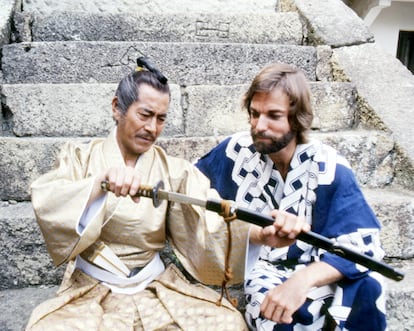
But when they allowed Chamberlain to audition for the role, all doubts disappeared. Not only did he shine in action scenes, for which he had painstakingly prepared, but he also brought a fragility and bewilderment to the character that would have been beyond the reach of Connery. Filming was chaotic: American and Japanese cast members had serious communication difficulties, and the storms that plagued production didn’t help either. But it became NBC’s most-watched weekly series. Viewers were mesmerized by the show’s ancient rituals and previously unseen levels of violence.
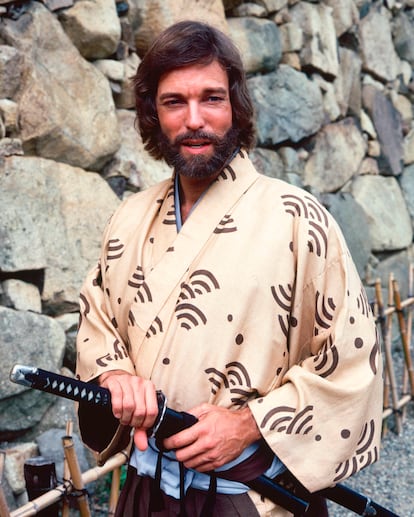
City streets would empty during Shōgun broadcasts, and the program sparked mass fascination with the East. Chamberlain was on the cover of what seemed like every magazine. But if he thought that it was his career’s high point, he was wrong. When he was in his fifties, Father Ralph came into his life. The Thorn Birds (1983) was meant to be a film, directed by Herbert Ross and starring Christopher Reeve. Then it was passed off to Peter Weir and Robert Redford and then, to Arthur Hiller and Ryan O’Neal. But the success of the miniseries format, which had become the great television phenomenon of the 1980s, convinced ABC that the best vehicle for the project was television, and that’s when Chamberlain’s name entered into the discussion. “Some wise person in Hollywood in some interview was talking about how I got all these wonderful parts in miniseries. He said, ‘There are better actors in town, but somehow Richard maintains the audience.’ That was the nicest thing any of the old pros had ever said about me,” he remembered years later.
Once again, Chamberlain proved himself as a ratings giant, despite the fact that the United States Catholic Conference came out against The Thorn Birds’ broadcast in the middle of Holy Week. “It’s a story about the fact that women tend to fall in love with men they can’t have. That crosses all cultures and borders,” said the book’s author, Colleen McCullough. And indeed, there was not a border that the miniseries seemed incapable of conquering. The world went nuts for Father Ralph of Bricassart and his forbidden love for Meggie. But not quite everyone loved the TV adaptation: McCollough called it “instant vomit.” In the series, Barbara Stanwyck plays the wealthy mature woman who uses her power and influence to seduce the ambitious Bricassart. When it came time to be filmed stroking Chamberlain’s naked torso, she forgot her line. The leading lady of Perdition was famous for supposedly never forgetting a cue.
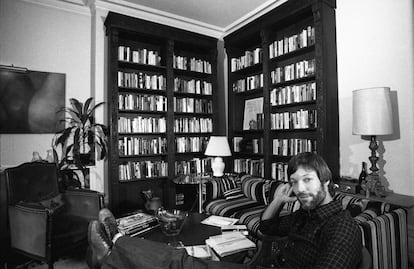
The chemistry between Rachel Ward and Chamberlain was so palpable in The Thorn Birds that the media spread rumors of an alleged romance between the co-stars. The truth is, Ward was embarking on a relationship with Bryan Brown that continues to this day, as does her friendship with Chamberlain.
Chamberlain’s last great TV role was The Bourne Identity (1988). Years before Matt Damon played the role, Chamberlain and Charlie’s Angel Jacklyn Smith starred in a very entertaining miniseries adaptation of the story that brought Chamberlain yet another Golden Globe nomination. But if in television he couldn’t miss, his career in the movies has featured plenty of performances that didn’t hit their marks, with such forgettable films as the 1987 version of Casanova in which he starred with Faye Dunaway and King Solomon’s Mines (1985) and its sequel, in which he played Allan Quatermain alongside Sharon Stone. That shoot has become legendary due to rumors of Stone’s rudeness: it’s said that she had become so unbearable that before she filmed a scene in which she was immersed in a tub of water, crew members urinated in it. He, however, has great memories of the project. The actor playing his brother was actually his partner at the time, Martin Rabbet, with whom Chamberlain stayed together until 2010.
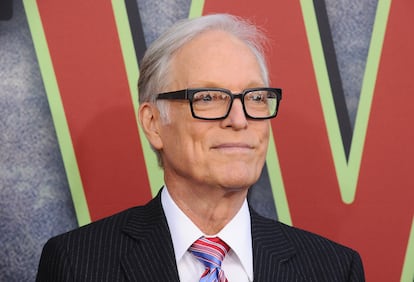
In 2019, at the age of 85, the actor retired after a final stage in his career in which he took his revenge for so many years of having to play it straight, with a run of gay roles. He appeared on Five Brothers, Chuck, Nip/Tuck and the new Twin Peaks, where it was clear his old magnetism was still very much intact. On the brink of turning 90, Chamberlain now lives in Hawaii, a happy retiree. Today, he has no secrets.
Sign up for our weekly newsletter to get more English-language news coverage from EL PAÍS USA Edition

